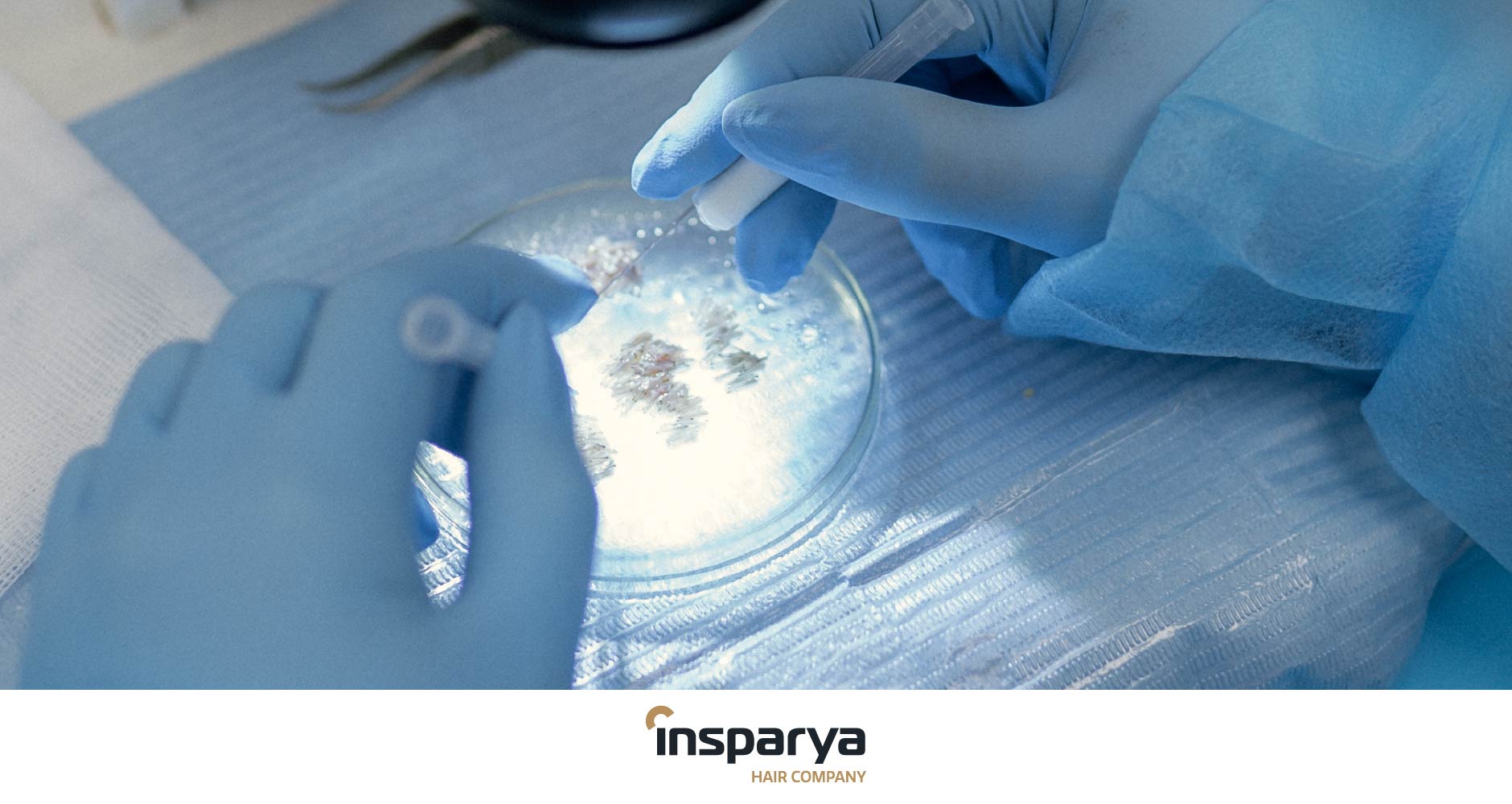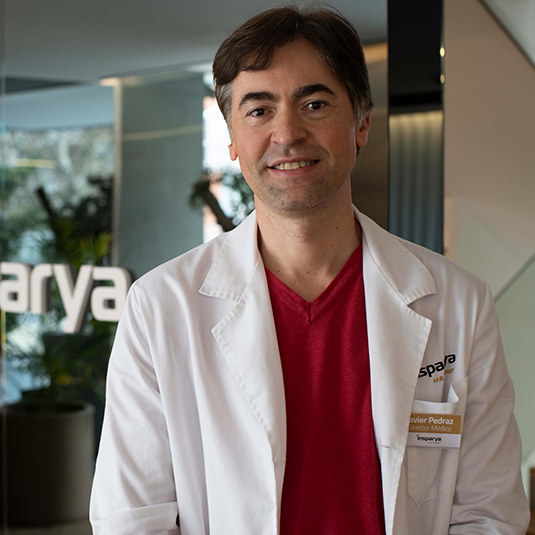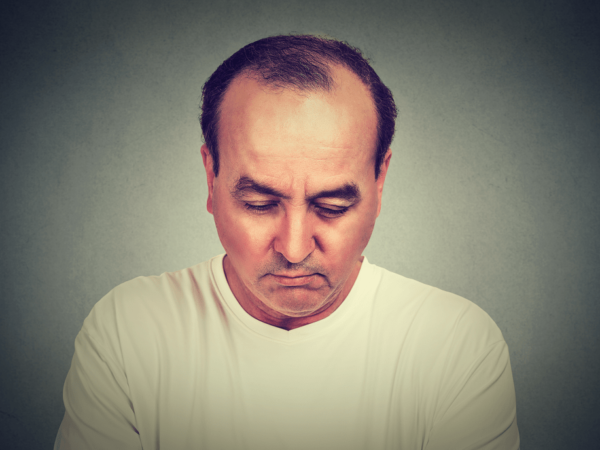
Trasplante capilar sin límite de folículos: ¿es posible?
- ¿Qué es un trasplante capilar?
- ¿Existe realmente un trasplante capilar sin límite de folículos?
- Factores que determinan el número de folículos trasplantables
- Riesgos de sobreexplotar la zona donante
- ¿Cuál es el número máximo de folículos que se pueden trasplantar en una sesión?
- ¿De qué depende el éxito de un trasplante capilar?
- Experiencia y habilidad del equipo médico
- Calidad y viabilidad de los folículos extraídos
- Cuidados postoperatorios
- ¿Cómo elegir una clínica para un trasplante capilar?
- Acreditación y experiencia de los profesionales
- Tecnología y técnicas utilizadas
- Resultados anteriores y testimonios de pacientes
- Preguntas frecuentes sobre trasplantes capilares
El concepto de un trasplante capilar sin límite de folículos siempre ha generado mucho interés entre quienes buscan una solución definitiva a la alopecia. Sin embargo, en la práctica, existen restricciones basadas en la disponibilidad de folículos en el área donante del paciente. A continuación resolvemos las dudas más frecuentes sobre el injerto capilar y la cantidad de folículos que se pueden trasplantar.
¿Qué es un trasplante capilar?
El trasplante capilar o injerto capilar es una técnica que implica mover unidades foliculares desde una zona donante (generalmente la parte posterior y los laterales de la cabeza) hacia áreas donde el cabello ha dejado de crecer. Este proceso permite que el cabello vuelva a crecer sin riesgo de rechazo, aprovechando los avances tecnológicos que han mejorado la recuperación de la densidad y la línea capilar.
Para que el trasplante capilar cumpla con las expectativas del paciente es fundamental que sea realizado por un equipo médico especializado, utilizando tecnología y equipos de alta precisión. Esto asegura la restauración adecuada de la densidad capilar en zonas con pérdida irreversible de cabello. Además, la calidad del material folicular, el equipo utilizado y la experiencia de los profesionales son clave para que este procedimiento seguro, sencillo e indoloro gracia sea todo un éxito.
Técnicas de trasplante capilar
Las técnicas para el trasplante capilar han evolucionado de forma muy significativa en las últimas décadas. Así, cada vez son más efectivas y menos invasivas las soluciones para quienes padecen alopecia. Entre las más destacadas se encuentran la técnica de extracción de unidades foliculares (FUE) y la técnica de tira (FUT). La técnica FUE suele ser preferida por su menor invasividad, recuperación más rápida y la ausencia de una cicatriz lineal visible, lo que la hace mejor para un resultado estético mucho más natural.
FUE (Follicular Unit Extraction)
El proceso de la técnica FUE comienza con la extracción individual de unidades foliculares de la zona donante. Es muy poco invasivo, no deja cicatrices visibles y permite al paciente retomar sus actividades normales en pocos días.
La velocidad de extracción es esencial para la supervivencia de los folículos, por esta razón en Insparya hemos desarrollado tecnología para optimizar este proceso delicado y laborioso. Se trata del dispositivo BotHair Ultra Plus, fruto del trabajo de la división Insparya Hair Technology. Permite extraer la unidad folicular en un solo movimiento, utilizando un micro-punch diseñado exclusivamente para el Grupo Insparya. Las ventajas son numerosas, destacando que el corte para extraer la unidad folicular es preciso, realizado en un único y limpio movimiento, sin la necesidad de manipulación con pinzas. Las unidades foliculares son aspiradas directamente hacia el almacenamiento en una solución de conservación. Esto facilita una cicatrización más rápida y minimiza los daños tanto en la unidad folicular como en las áreas circundantes.
Otra ventaja destacada de BotHair® UltraPlus es su capacidad de personalización, ya que permite ajustar la velocidad de extracción de acuerdo con las necesidades específicas de cada paciente y las características particulares de su cuero cabelludo.
FUSS (Follicular Unit Strip Surgery)
La técnica FUSS consiste en la extracción de una tira de cuero cabelludo de la zona donante, generalmente de la parte posterior de la cabeza. Luego, esta tira se divide en unidades foliculares individuales que se implantan en la zona receptora. La principal diferencia con la técnica FUE (Follicular Unit Extraction) es que en FUE las unidades foliculares se extraen una a una directamente de la zona donante sin necesidad de una incisión grande.

Zonas donantes en un trasplante capilar
En un trasplante capilar, la zona donante juega un papel crucial. Generalmente, esta área se encuentra en la parte posterior y en los laterales de la cabeza, y de ella se extraen los folículos que serán implantados en las zonas afectadas por la alopecia.
La clave está en que la zona donante no se ve afectada por las hormonas que causan la caída del cabello ni tiene predisposición genética a la pérdida, por lo que el cabello una vez trasplantado no se vuelve a caer.
¿Existe realmente un trasplante capilar sin límite de folículos?
En teoría, no existe un trasplante capilar sin límite de folículos. La cantidad de folículos que se pueden trasplantar está limitada por la densidad y la calidad del área donante del paciente. El área donante debe tener suficientes folículos saludables para ser extraídos sin comprometer la apariencia de esta zona. Las técnicas FUE y FUT permiten la extracción de un número importante de folículos, pero siempre hay un límite basado en la disponibilidad de folículos en el área donante y la capacidad del cuero cabelludo para sanar y soportar el trasplante.
Por esta razón, antes de la intervención, es vital evaluar el estado de la zona donante y ajustar las expectativas del paciente. Serás un buen candidato si la extracción no compromete su densidad y permite repoblar la zona receptora eficazmente. No hay que olvidar que una zona donante de calidad tiene una alta densidad de folículos por cm².
La habilidad del experto es también esencial para un resultado natural. La zona donante suele tener una densidad de 80-100 unidades foliculares por cm², y se busca lograr al menos 45 unidades por cm² para una buena densidad en la zona trasplantada.
Factores que determinan el número de folículos trasplantables
– Densidad capilar de la zona donante
La densidad del cabello en la zona donante determina cuántos folículos pueden ser extraídos sin ver comprometida su apariencia estética.
– Características del cabello del paciente
La textura, grosor y color del cabello influyen en el resultado final del trasplante. Cabellos más gruesos y oscuros pueden proporcionar una mayor cobertura y una sensación visual de más densidad.
– Extensión del área a tratar
La cantidad de folículos necesarios depende de las dimensiones de las zonas con alopecia. Como es lógico, áreas más grandes requerirán más folículos para obtener un resultado óptimo.
Riesgos de sobreexplotar la zona donante
Sobreexplotar la zona donante puede llevar a problemas como cicatrices visibles y una apariencia poco natural y con poca densidad. Por esta razón es esencial mantener un equilibrio para preservar la salud y la estética de ambas zonas, donante y receptora.
¿Cuál es el número máximo de folículos que se pueden trasplantar en una sesión?
La cantidad máxima de unidades foliculares a trasplantar varía según el paciente, ya que cada zona donante tiene sus características particulares. Por este motivo es fundamental realizar un análisis previo y documentar cuántas unidades se trasplantarán.
En esta tarea también es esencial definir con precisión la zona a repoblar, asegurándose de que no sea mayor de lo que la zona donante puede soportar. De lo contrario, las unidades foliculares quedarían muy separadas, generando un cabello poco denso. Es preferible cubrir una zona más pequeña con buena densidad.
En Insparya, gracias a nuestra tecnología avanzada y la formación especializada de nuestro equipo, aseguramos la implantación de hasta más de 4.000 unidades foliculares cuando sea necesario, en procedimientos que no superan las 6 horas. Además, ofrecemos un seguimiento continuo de 18 meses para todos nuestros pacientes.
También hay que valorar que, si un primer trasplante no logra el resultado deseado, es posible realizar una segunda o tercera intervención para aumentar la densidad. Sin embargo, como decíamos anteriormente, hay que tener cuidado de no sobreexplotar la zona donante, ya que esto puede causar una pérdida de densidad visible. Si esto ocurre, la micropigmentación puede ser una solución estética efectiva. Esta técnica introduce pigmentos en el cuero cabelludo para simular mayor densidad, ofreciendo resultados naturales de manera sencilla e indolora.

Límites recomendados por expertos
El número de folículos que se puede trasplantar en una sola sesión varía según la técnica utilizada y las características del paciente. En general, se considera que implantar entre 3.000 y 4.000 unidades foliculares es adecuado para cubrir áreas de alopecia moderada en una sola intervención. En algunos casos, con técnicas avanzadas, este número puede aumentar hasta 6.000 folículos.
Casos excepcionales
Hay situaciones en las que se pueden trasplantar más de 6.000 folículos, pero estos casos son menos comunes y requieren una evaluación detallada del paciente. La calidad y cantidad de la zona donante son cruciales para determinar la viabilidad de implantar un número tan alto de folículos en una sola sesión. En casos de alopecia severa, puede ser necesario dividir el tratamiento en varias sesiones para obtener los mejores resultados.
¿De qué depende el éxito de un trasplante capilar?
Sin duda, un diagnóstico preciso es fundamental para abordar la alopecia con éxito mediante un trasplante capilar. Asimismo, es crucial elegir una clínica especializada en trasplantes capilares, equipada con quirófanos de alta calidad y un equipo médico experto. La experiencia y conocimientos del equipo, junto con el acceso a tecnologías avanzadas, son determinantes.
Si tienes dudas sobre qué clínica elegir, te recomendamos revisar las opiniones de otros pacientes y examinar los resultados antes y después. En Insparya, ofrecemos testimonios reales de trasplantes capilares que pueden orientarte. Además, estamos disponibles para resolver tus preguntas sobre las técnicas y tecnologías que empleamos.
Experiencia y habilidad del equipo médico
Contar con un equipo médico experimentado es fundamental para el éxito de un trasplante capilar. Un equipo bien formado no solo posee conocimientos profundos en técnicas como la FUE, sino que también se mantiene actualizado mediante formación continua. Esto garantiza que estén al tanto de las últimas innovaciones y mejores prácticas en el campo del trasplante capilar. Esta actualización constante permite al equipo adaptarse a los avances tecnológicos y mejorar continuamente los resultados de los pacientes, asegurando así un procedimiento seguro y efectivo.
En Insparya contamos con más de 400 profesionales, incluyendo médicos, enfermeros/as, consultores clínicos e investigadores. Se mantienen en constante desarrollo y formación, siendo reconocidos por las principales empresas médicas e instituciones de investigación a nivel global por su experiencia y dedicación.
De esta forma podemos dar una solución global a través de especialistas de diversas áreas, desde medicina general a dermatología, pasando por psiquiatría, anestesiología y medicina correctiva y reconstructiva.
Calidad y viabilidad de los folículos extraídos
La calidad y viabilidad de los folículos capilares extraídos son fundamentales para el éxito de un trasplante capilar por varias razones cruciales:
- Supervivencia y crecimiento: los folículos capilares deben ser fuertes y saludables para asegurar que sobrevivan al proceso de trasplante y continúen creciendo de manera natural en el área receptora.
- Resultado estético: los folículos de alta calidad garantizan un buen resultado estético, con un cabello que se ve y se siente natural. Esto es esencial para la satisfacción del paciente y la mejora de su autoestima.
- Minimización de riesgos: los folículos de alta calidad reducen los riesgos de complicaciones postoperatorias y mejoran la cicatrización y recuperación del paciente después del procedimiento.
En resumen, que los folículos extraídos sean de calidad y viables es determinante a la hora de realizar un trasplante capilar con éxito.
Cuidados postoperatorios
Después del trasplante, el postoperatorio es clave para que el resultado final sea óptimo. Es muy importante que el paciente siga al detalle las indicaciones del médico durante los primeros días para asegurar la supervivencia de los folículos trasplantados. En Insparya nos encargamos del primer lavado postoperatorio y proporcionamos orientación sobre el descanso adecuado, la higiene para que la cicatrización avance y las actividades a evitar. Además, hacemos un seguimiento de hasta 18 meses tras el trasplante.
¿Cómo elegir una clínica para un trasplante capilar?
Elegir dónde realizarte un trasplante capilar es una decisión que marcará el resultado del proceso. Por eso, cuando valores una clínica debes tener en cuenta estas cuestiones:
Acreditación y experiencia de los profesionales
Asegúrate de que la clínica cuente con médicos y profesionales de enfermería especializados y con experiencia comprobada en cirugía capilar. Esto es crucial para recibir un diagnóstico preciso, el primer paso en la elección del tratamiento adecuado para resolver tus problemas capilares. Es esencial que puedan evaluar el estado del cabello y del cuero cabelludo, identificando las causas subyacentes con precisión.
Además, la formación continua y actualizada del equipo en las últimas técnicas y tecnologías en salud capilar garantiza la aplicación de métodos innovadores y efectivos, asegurando resultados de alta calidad y minimizando riesgos.
La presencia de un equipo cualificado garantiza la seguridad del paciente durante todo el proceso, siguiendo estrictamente las mejores prácticas y protocolos. Asimismo, los profesionales cualificados ofrecen un enfoque integral y personalizado para abordar la problemática capilar única de cada paciente, diseñando planes de tratamiento individualizados que se ajustan específicamente a sus necesidades y objetivos.
Tecnología y técnicas utilizadas
El éxito del trasplante capilar depende tanto de la especialización del equipo médico como del uso de tecnología avanzada. Esta combinación garantizará que los resultados son naturales y que cumplen con las expectativas de los pacientes.
Hay que tener en cuenta que la clínica capilar que invierte en tecnología de vanguardia y técnicas avanzadas no solo mejora la precisión y eficacia del procedimiento, sino que también reduce los riesgos y acorta los tiempos de intervención y recuperación.
En este sentido, Insparya ha revolucionado el campo del trasplante capilar al introducir BotHair UltraPlus, una tecnología innovadora que optimiza la extracción, conservación e implantación de unidades foliculares. Este dispositivo minimiza la manipulación de los folículos, garantizando resultados más precisos y naturales para los pacientes.
Resultados anteriores y testimonios de pacientes
Si estás buscando una clínica capilar es fundamental que compruebes que cuenta con una sólida cartera de casos de éxito. Además, es importante verificar los testimonios y los resultados documentados de «antes y después» de la clínica. Una extensa cartera de casos de éxito demuestra la capacidad del equipo médico para obtener resultados naturales y satisfactorios. Esto proporciona confianza al paciente, asegurando que está en manos de profesionales con experiencia probada en resolver problemas capilares similares.
El Grupo Insparya lidera el sector de los trasplantes capilares con más de 10 años de experiencia y el mayor volumen anual de procedimientos en clínicas de España y Portugal. Más allá de restaurar el cabello perdido, nos enfocamos en mejorar la salud capilar de forma integral.
Preguntas frecuentes sobre trasplantes capilares
¿Es doloroso el procedimiento?
Es una duda muy común, pero no, el procedimiento de trasplante capilar no es doloroso, porque se aplica anestesia local. Durante la intervención, los pacientes suelen sentir solo una leve molestia. Después del trasplante, puede haber una sensación de tirantez o sensibilidad en la zona tratada, pero esto se gestiona fácilmente con medicación prescrita por el médico.
¿Cuánto tiempo tarda en crecer el cabello trasplantado?
El cabello trasplantado comienza a crecer alrededor de tres meses después del procedimiento. Sobre el sexto mes se puede observar un crecimiento notable y, entre los 9 y 12 meses, los pacientes suelen ver resultados finales, con el cabello totalmente crecido y denso.
¿El cabello trasplantado se cae con el tiempo?
El cabello trasplantado se toma de la zona donante, que no presenta caída. Por esta razón, una vez injertado, no se cae con el tiempo. Hay que tener en cuenta que estos folículos trasplantados están programados genéticamente para crecer durante toda la vida del paciente, lo que garantiza resultados duraderos.
¿Cuánto cuesta un trasplante capilar?
El coste de un trasplante capilar varía según varios factores, como la cantidad de unidades foliculares necesarias y la técnica utilizada. En Insparya, el precio del trasplante se determina tras una evaluación personalizada del paciente, asegurando que se ofrece el mejor tratamiento adaptado a sus necesidades específicas. Si quieres obtener un presupuesto personalizado, fija ya tu primera cita en Insparya.







